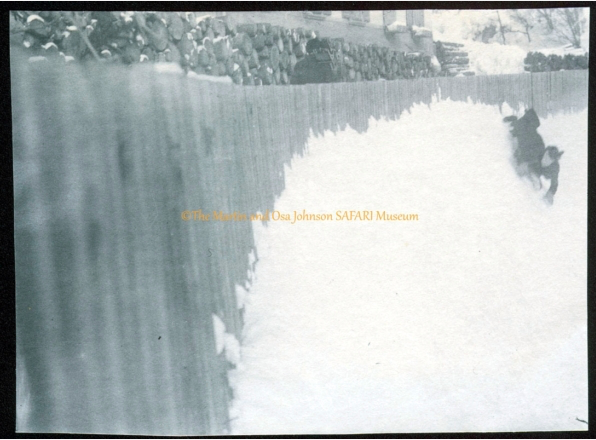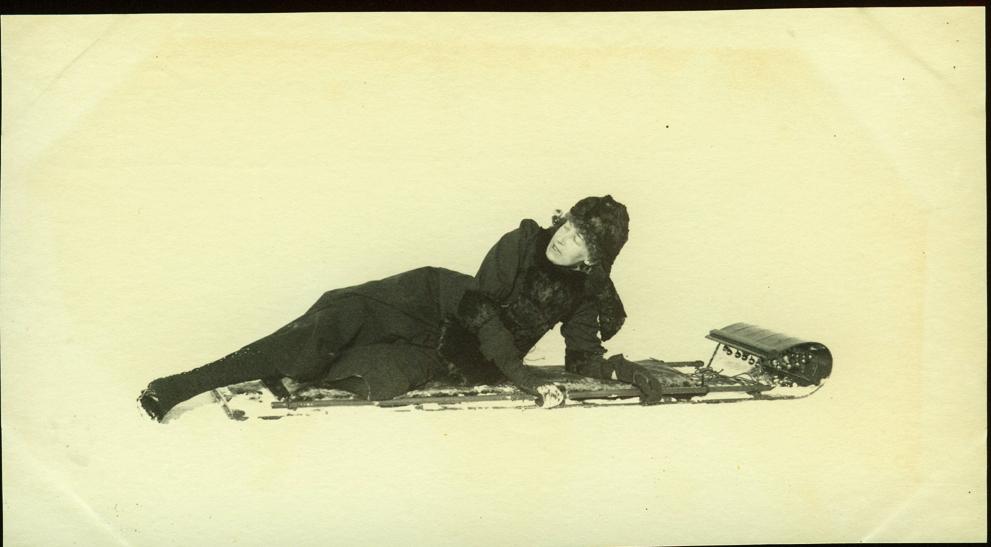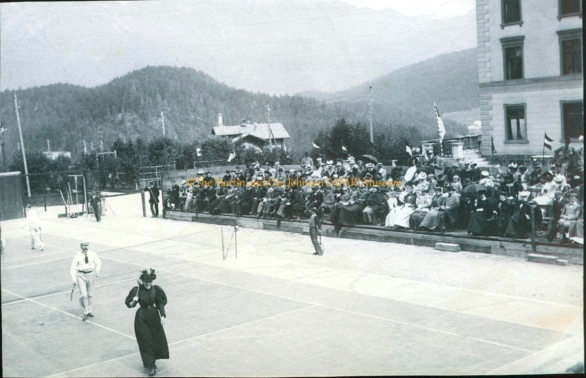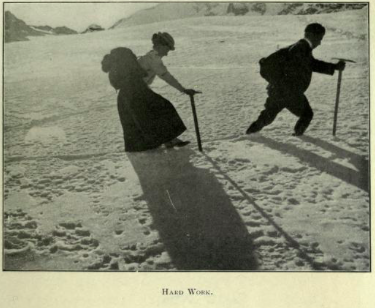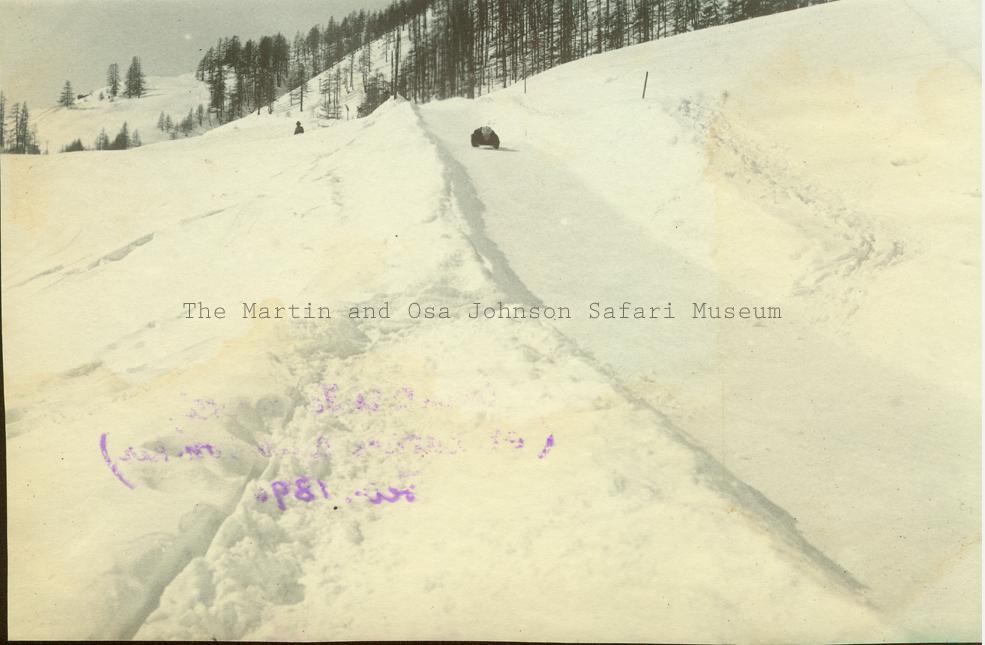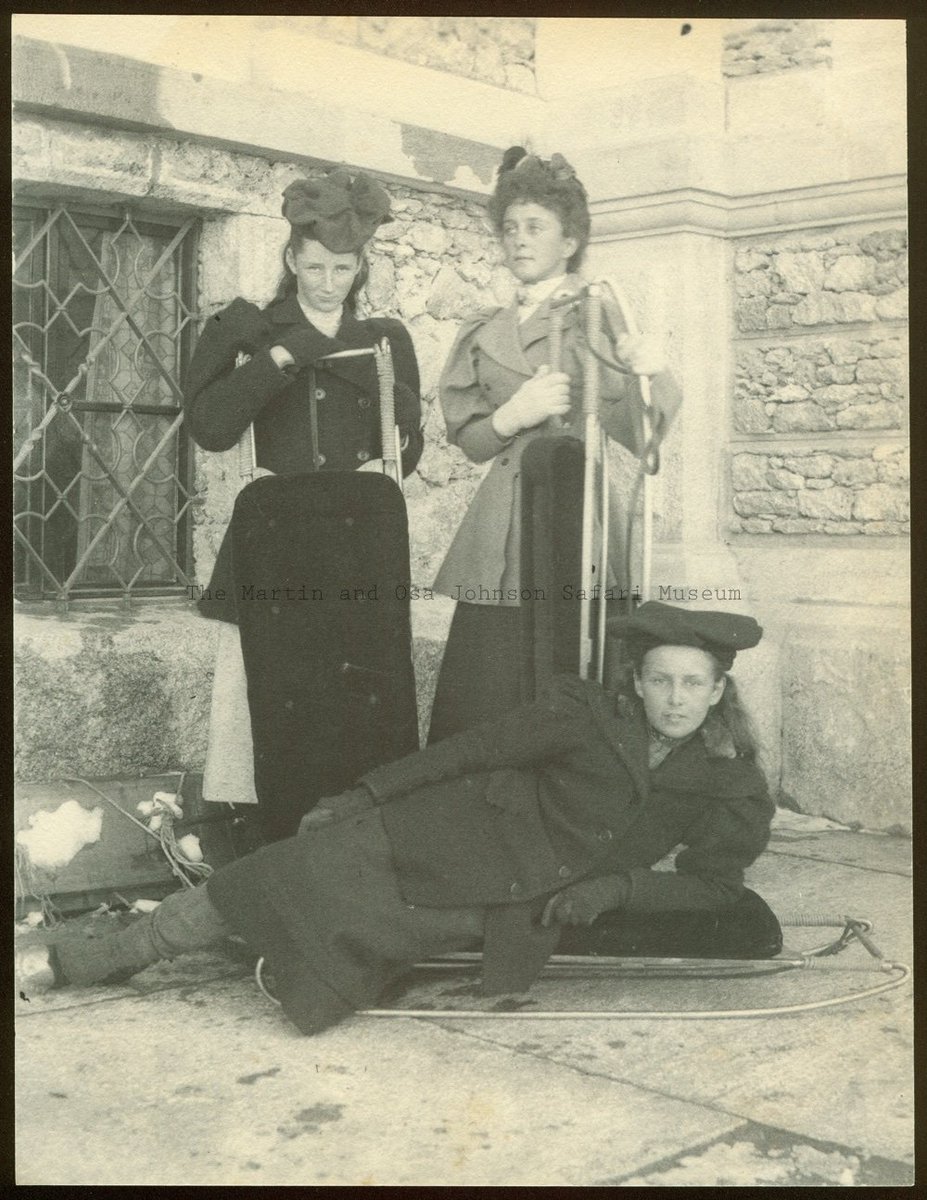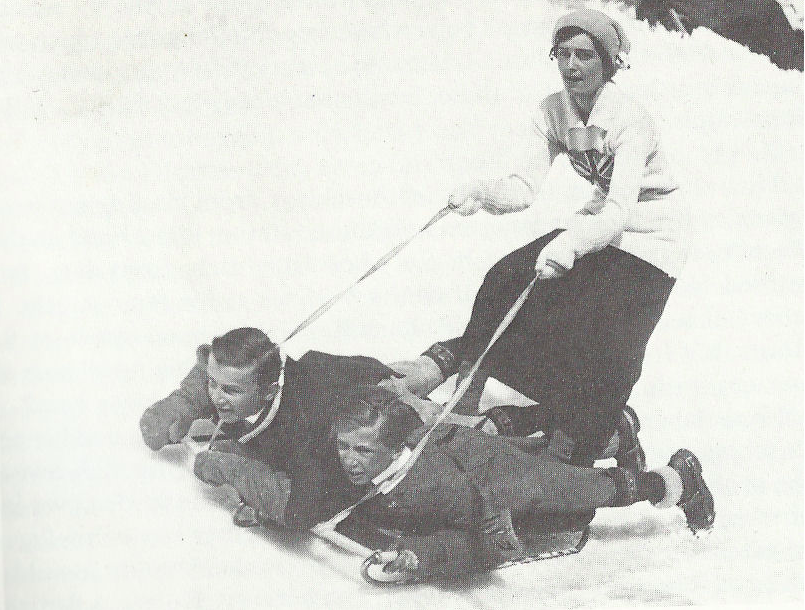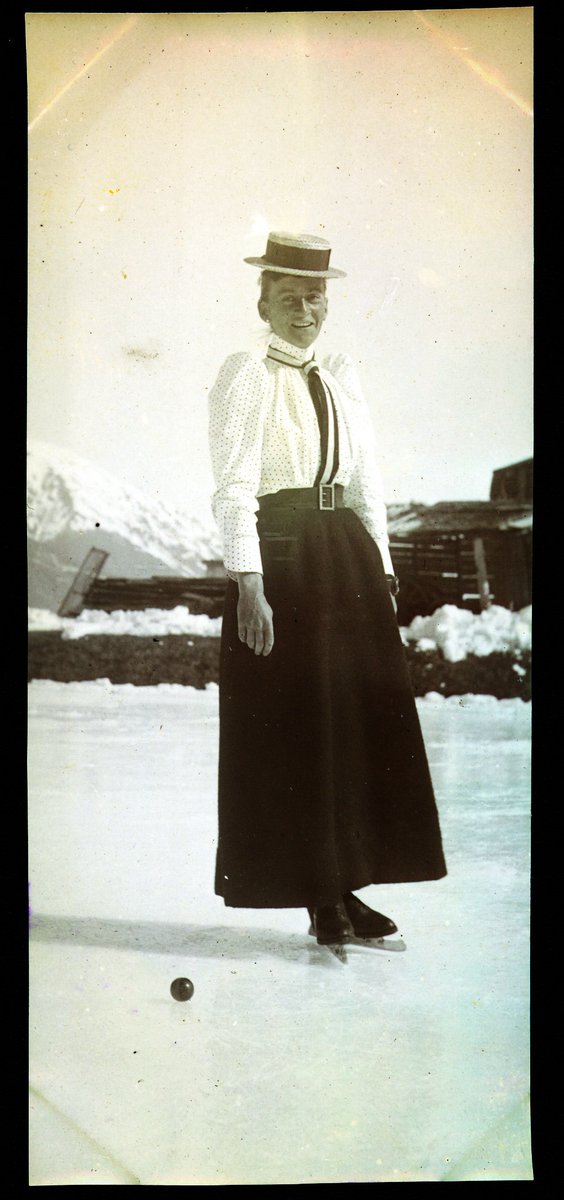So here’s a (maddening) thing. I’m researching C19th women climbers in the Alps – and there were, like, HUNDREDS. There’s this widespread misconception that (as one male historian of sport puts it) ‘in sport, women’s historic role was that of handkerchief-fluttering spectators.’
Not remotely true. I’ve spent today looking at hundreds of photos of late-C19th women ice-skating, curling, hiking, climbing, playing tennis, and tobogganing in St Moritz. Here’s Effie Holland skeleton racing in St Moritz. And Janey Campbell posing on a sledge in 1892.
And Pauline Cálffy playing tennis (mixed doubles and ladies’ singles) – in 1894 she won, outright, the first Hungarian lawn tennis championships, which were mixed sex. And here’s Lizzie Le Blond up a mountain.
One of the most popular past-times (for the very wealthy) was Cresta sledding: skeleton racing, face first, down a 1.2 km track outside St Moritz. Women participated enthusiastically. Here’s Frances Gibson sledding head-first in 1895.
And here are the 3 winners of the Ladies ‘Grand National’ Cresta race that year: Frances Gibson, Cissy Saunderson and Esther Saunderson. And, a bit later, here’s Vera Barclay’s sister Claudia Barclay (both keen sledders) on the Cresta Run in 1913.
But in 1929, women were suddenly banned from Cresta racing. The reasons why aren’t clear: some cite men’s fears of women damaging their breast tissue, or that men didn’t like racing against women who were as fast as them. But the ban didn’t happen in isolation.
It came 1 year after the IOC banned women from running distances over 100m at the Olympics – on the basis that “women are not built physically to undergo the strain of races. Nature made them to bear children.”
And it was 8 years after the FA banned women from playing football on FA-affiliated pitches. And 2 years before women were banned from professional baseball in America.
Anyway, idly, I thought it might be fun to go to the Cresta Run, for research. But look what I find on the Cresta Run’s website: ‘LADIES MAY USE THE RUN STRICTLY BY INVITATION’.
The near-total ban on women’s participation – which had begun in 1929 – was still in operation LAST YEAR (when it was partly lifted as part of a ‘two-year trial’ to allow women to race 30 days of the year. Thanks.).
This continued exclusion for women applies to running too. The English Cross Country Association today restricts women in the national championships to running only 8km, two-thirds of the men’s race, based on outdated (& disproven) ideas about women’s inferior stamina.
And these bans are partly responsible for shaping this misconception that women simply didn’t take part in sports until the 1980s. ‘Women didn’t run before 1974’, is another claim I’ve read. And ‘not many women climbed in the nineteenth century.’
But this is so so wrong. Women did - in very significant numbers. But these ideas shape whether women feel at home in sports today. These bans, these bad histories, they reinforce the idea that we’re recent interlopers into a male preserve.
Women have a rich and impressive and really LONG history of participation and achievement and world records in an enormous range of sports – as long a history as the history of men’s sport. Sport – outdoorsiness – it’s not historically a male preserve.
Women& #39;s stories about sport, about their bodies in sport, about their engagements with the environments in which sport takes place, they& #39;re different from men& #39;s stories. They& #39;re stories of negotiating with voluminous clothes, with fear, with ostracisation, with male violence.
These are our fore-sisters. This is our world too. This is our history and these our stories. And perhaps excavating these stories of these early sporting women, of their evident pleasure in their bodies& #39; strength & capability, is part of trying to feel at home, in the world now.
And here& #39;s Lizzie Le Blond, ice-skating, in St Moritz in March 1893, to end/

 Read on Twitter
Read on Twitter